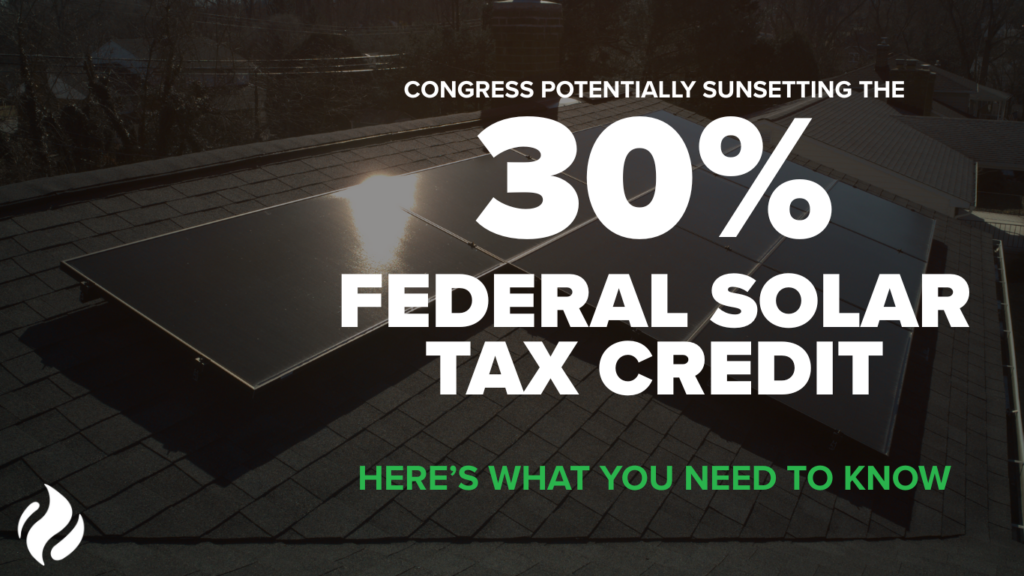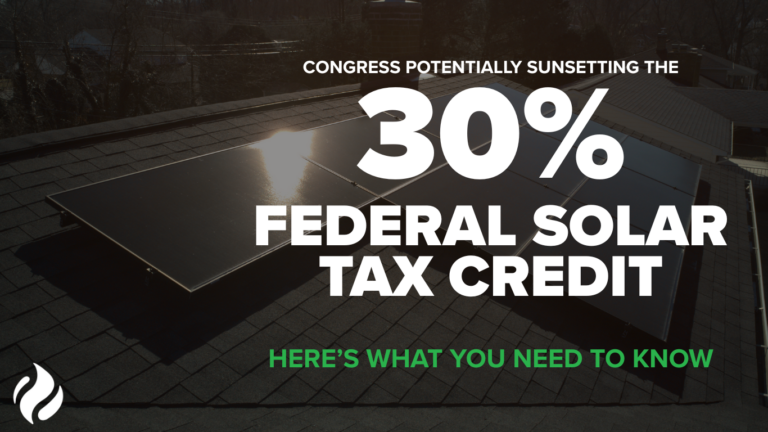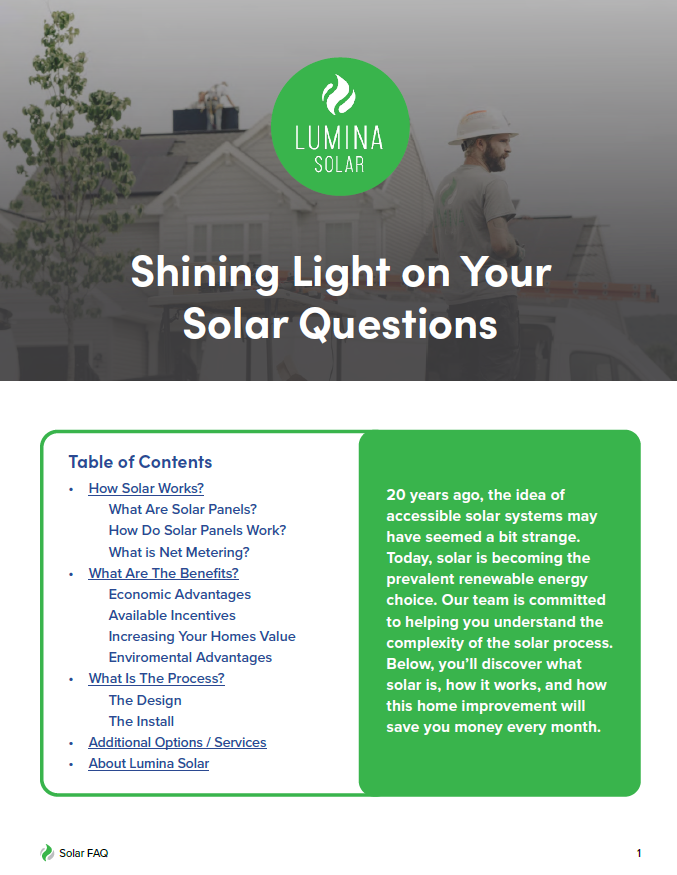What Does the Future of Solar Energy Look Like?
The verdict is in: fossil fuels are detrimental to our environment. But with significant global proliferation, how can we begin to imagine a future energy infrastructure held up by solar power and other clean, renewable energy sources?
Our climate is our lifeline.
Despite efforts to separate ourselves, humans are a functional piece of the global ecosystem, the same as coral reefs or migratory animal herds. However, with our ability to build societies and shape technology comes a greater responsibility to consider how our growth affects the natural world.
Since the Industrial Revolution, fossil fuels have driven global human development. But this expansive urbanization has come at a dire cost. The scientific consensus on the effects of fossil fuel usage is clear, but the true scale of extractive energy goes beyond carbon emissions and a rising global temperature. From mountaintop removal to fracking wells leaking into waterways, the impact on local environments should be considered alongside the impact had on global environments.
Fossil fuels have helped revolutionize societies across the world, and have made energy more accessible to a larger portion of the population in every country on Earth. Despite their historical impact, however, it’s clear that we have to take a different path forward for long-term energy generation.
And that path is sustainable energy.
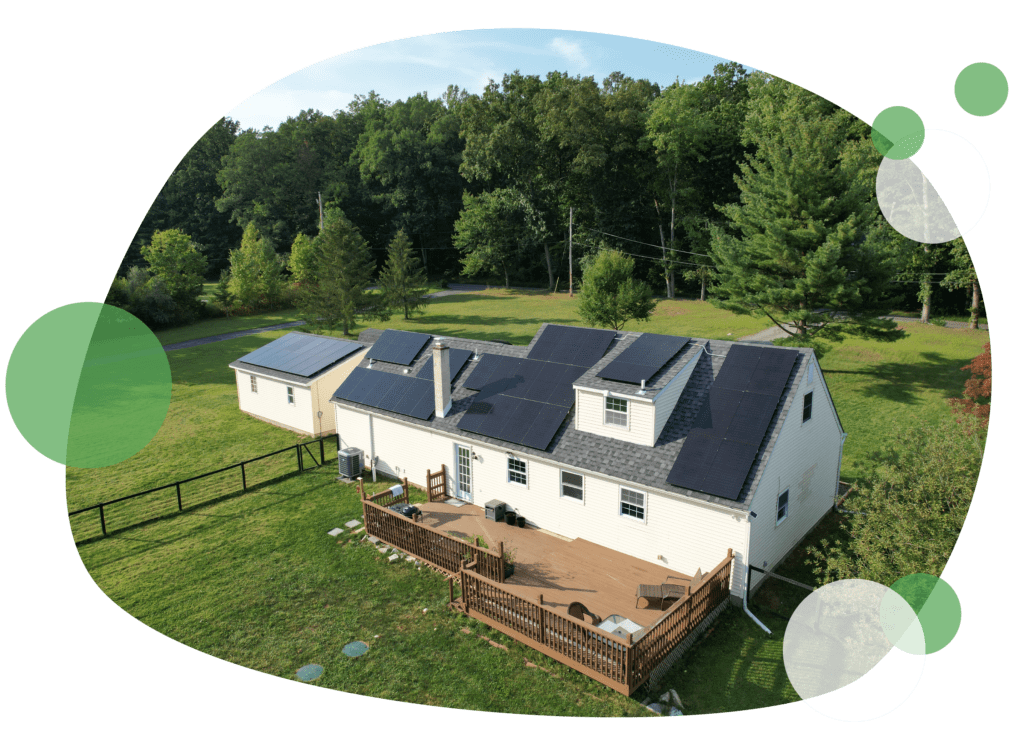

An Understanding of Current Consumption
The global infrastructure is currently dependent on fossil fuels, especially in developing countries that are following the industrial blueprint laid out by global leaders such as the United States and the European Union. Fossil fuels are abundant, naturally formed over time from ancient animal and plant remains. Their fossilization process ensures they contain hydrocarbons, a fundamental ingredient in their ability to fuel machinery. Coal, oil, and natural gas are the three major forms of fossil fuels we use. Today, they account for roughly 80% of the world’s energy production, with renewables and nuclear accounting for the other 20%. Renewables do hold a higher share of global electricity production, a share that’s projected to increase greatly in the coming years as more countries adopt renewable energy technologies.
By taking a closer look, we can understand how individual fossil fuels contribute to the overall picture of energy production:
Coal – 36%
Gas – 22.9%
Hydro – 15%
Nuclear – 9.8%
Wind – 6.5%
Solar – 3.6%
Geo+Biomass+Other Renewables – 2.7%
Oil – 2.5%
Other – 0.9%.
The proliferation of fossil fuels has a clear, illustrated impact on the environment. From rising global temperatures to air and water pollution to the risks of oil spills and earthquakes caused by fossil fuel wastewater injections. Renewables come with their own downsides, of course, but overall, their impact is much more positive on the environment.
When considering the use of renewables, and what the impact on our future energy infrastructure can be, it’s important to first understand what forms of renewable energy exist.
The Types of Renewable Energy We Use
Commercial and Residential Solar
Commercial and residential solar is the fastest-growing renewable energy source for the private sector. In most cases, these photovoltaic panels are placed on the roofs of buildings, which allows them to not take up valuable real estate but instead be placed conveniently out of sight. PV panels by transforming captured sunlight into electricity through the photovoltaic process. The electricity is sent to an inverter which converts it from Direct Current (DC) energy to the more practical Alternating Current (AC).
Solar panels produce zero emissions. They benefit from a lack of moving mechanical parts, which lessens the maintenance burden when compared to other renewable methods. Both residential and commercial solar implementations deliver energy independence to their owners, allowing them to generate and store their own energy supply.
In recent years, solar has become increasingly affordable thanks to cheaper production costs and government subsidies to encourage solar adaption. As more investment is put into the process globally, solar will continue to increase in its efficiency and storage capabilities.
The compatibility of solar energy with electric vehicles will also be a main proponent of its growing implementation.

Onshore and Offshore Wind
Wind is a key piece of the renewable energy puzzle. To operate, gusts of wind cause large turbines to rotate, which in turn cranks a generator, creating energy. Onshore wind, sometimes called wind farms, refers to often large concentrations of turbines. They’re particularly appealing in areas like the American Midwest, where flat, open space allows for unobstructed wind flow and provides ample room for large farms.
The other alternative is offshore wind, where turbines are installed over open water. This method is more efficient thanks to the high wind speeds that commonly occur over the ocean.
The high cost of turbine construction, as well as the onshore land usage required, can make wind a less viable option for mass adoption. This method is also dependent on consistent wind gusts, which can make regions where it’s implemented more limited. However, despite its limitations, wind power is currently widely used. In the U.K. alone, on-shore wind energy contributed to 11% of the country’s electricity needs and powered 18.5 million U.K homes.
Onshore and Offshore Solar
Onshore refers to all land-based solar energy such as rooftops and on the ground. This includes residential solar and larger commercial-based solar farms. Off-shore solar is a unique method of harnessing solar energy where PV panels are placed on large buoy-like floats. This gives them the advantage of having the water beneath them act as a coolant which causes the energy collection to be more efficient. They also avoid the problem that land-based solar farms face of occupying large areas of land.
If world governments continue their trend of offering financial incentives for companies to utilize renewable energy sources, on-shore and off-shore solar will become two of the most highly advantageous methods for renewable energy harnessing for larger corporations, farm owners, and real estate investment firms.
Geothermal
Geothermal energy harnesses power using heat energy from the earth’s naturally occurring thermal deposits. Typically, these consist of reservoirs of hot water that are heated deep below the earth’s surface by magma.
The main drawback of geothermal energy is its location dependence. To take advantage, energy developments will need to be built in areas where geothermal springs naturally occur. Man-made geothermal alternatives are possible but come at a greater expense.
Additionally, manipulating subterranean chambers can lead to surface instability, which can be dangerous. These downsides are balanced by the efficiency geothermal provides. In areas where geothermal springs are prominent, the energy is commonly used for the heating and cooling of buildings.
Hydrokinetic and Tidal
Our oceans and rivers provide an abundant source of renewable energy thanks to the exceptional strength of moving water. Hydrokinetic energy is the term for power generated by free-flowing water currents. It can be drawn from rivers, inland waterways, and man-made canals. Water is typically routed through turbines installed in hydroelectric dams.
Tidal energy uses the power of ocean tides to rotate a generator back and forth, producing energy in the process. Tidal energy presents a strong innovation in the renewable energy space but is currently underutilized as projects can be expensive to get functional.
These implementations can generate massive amounts of electricity but rely on strong current speeds or consistent tides, and importantly, a large volume of water moving through the system. Hydroelectricity is also limited by location, and the infrastructure required can result in high construction costs to create. Another issue faced can be the impact of damming rivers, which can cut off downstream water sources for rural communities.
In a twist of irony, climate change has also made dams less effective in some regions. Shorter and warmer winters have resulted in reduced snowmelt that feeds river systems, which creates a reduced production output from dams. These systems also may have larger carbon footprints than previously thought thanks to vegetation decay beneath reservoirs, leading to the release of detrimental methane gas.
Tidal energy presents a huge opportunity for a renewable energy future, but the method still has a long way to go until it’s taken full advantage of.
Biomass
Biomass energy is sourced from renewable organic materials that come from plants and animals. Up until the mid-1800s when the main source of energy was switched to oil, biomass was the largest source of U.S energy consumption. Common types of biomass include wood, crops and waste materials, municipal solid waste and animal manure, and human sewage.
Biomass is a highly regenerative source of energy as organic materials are easily reproduced. The main problem with biomass is the high cost to convert biomass energy into usable energy. It is also less efficient than other methods and isn’t completely carbon-free, especially when directly burning biomass.
Looking Towards a Solar Future
No picture of a carbon-neutral world down the line can be composed without a combination of renewable energy approaches. However, in terms of cost and deployability, solar presents one of the strongest green energy opportunities we have available to us right now.
In recent years, solar has become more affordable, and more efficient in its conversion process. This has brought skyrocketing numbers of residential and commercial solar installations across the US, and the world. It’s apparent that when energy alternatives are given, people tend to seek them out.
However, the reality is there are still some roadblocks solar faces before it can truly lead the green energy pack. Most of these issues are within the realm of solvability with proper research, funding, and exploration. Let’s take a look at these challenges and the potential they have to be resolved in the coming years.
Panel Efficiency
Counterarguments to solar adaption usually open with a focus on the efficiency of solar energy capture. That is to say, how effective individual cells within a panel are at transferring the available sunlight that hits them into usable electricity. Efficiency is a challenge solar panel technology has always contended with, but the good news is that efficiency has steadily increased since the inception of photovoltaic panels. In recent years, huge gains have been made to increase the max output of energy from individual panels.
In the 1990s, solar panels clocked in at an upper-efficiency limit of just under 15%. Today, the average consumer solar panel regularly achieves 20-25% efficiency. While these gains may seem small given the interval of time, it’s important to understand the complexity of navigating internal PV mechanics. While these efficiency gains are exciting to see, current panels still tend to leave a lot of unharvested sunlight on the table.
What’s the Outlook of Solar Panel Efficiency?
The good news is that researchers are already making great strides toward highly efficient PV panel systems. In 2020, engineers at the National Renewable Energy Laboratory (NREL) created a prototype six-junction III-V solar cell with 47.1% efficiency. Previously, researchers had worked within the constraints of single-junction cells, which utilize only one type of semiconductor and account for the impact of direct sunlight alone. Using a single-junction cell, efficiency is estimated to cap out between 29 and 33%, known as the Shockley-Queisser limit.
While the NREL experiment shows promise in how to expand solar efficiency, due to the cost and complexity of six-junction solar cells, it will likely never be deployable at scale. Instead, future solar prospects are focused on how to consistently match the Shockley-Queisser limit with single-junction solar cells. By consistently hitting this limit, solar panels would be able to maximize their efficiency, making them more effective for widescale use across the globe.
To accomplish this task, researchers are working through two related problems: materials and cost.
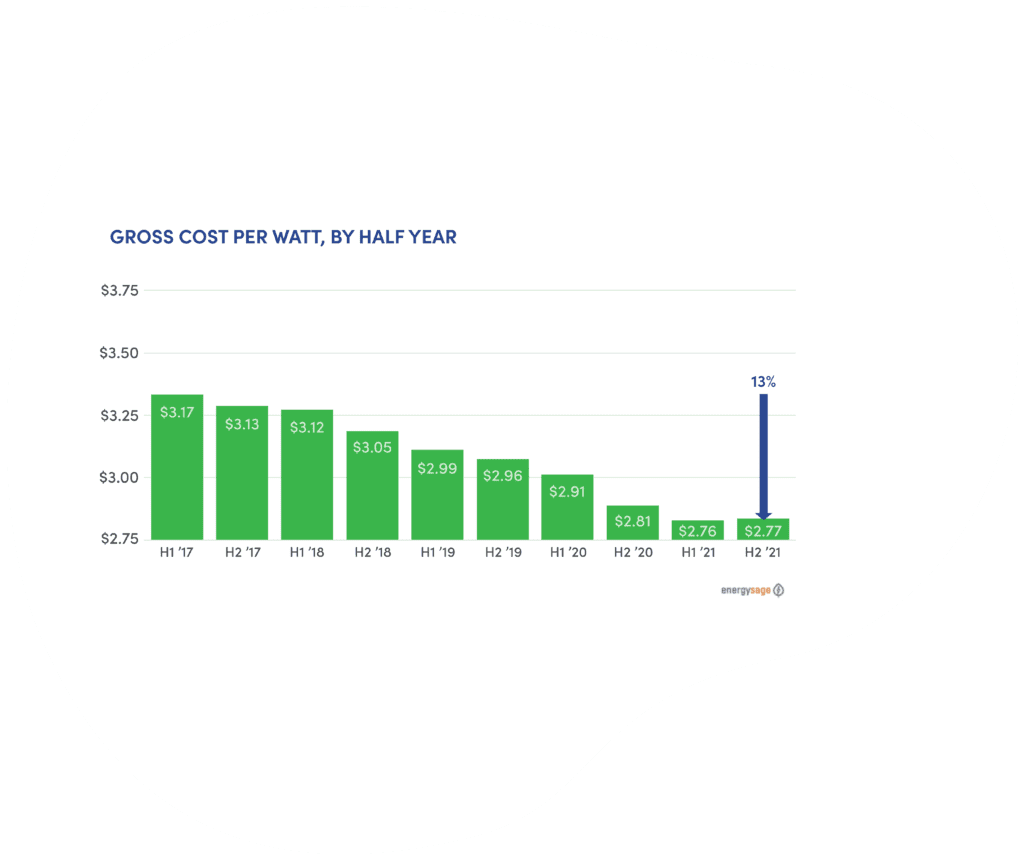
Finding a Better (and More Affordable) Material for Panels
At the center of an effective solar system is the panel itself. 95% of solar panels on the market today are composed of crystalline silicon. While this material has allowed researchers to pioneer photovoltaic technology and provides for long-term durability, its slow efficiency gains have led to the exploration of other options. One prospective material is perovskite, which is already used in some panel construction. This crystalline mineral initially displayed very low efficiency, around 3% during early use, but saw a rapid increase to 25%. Perovskite panels can achieve this efficiency consistently, making them a more effective alternative for converting sunlight to electricity. However, these panels may struggle to achieve the longevity of silicone panels, which can stay operational without significant efficiency loss for 20 to 25 years.
A third option being explored is a combination of the two, called “tandem cells.” These are silicone panels with a layer of perovskite applied. They’re able to capture more infrared light than either option and are a new promising direction for the future of solar cells.
To increase adoption within localized sectors like homeowners, small businesses, and non-profits, these panels must be made cost-effective. Thankfully, solar panel prices saw a substantial decrease throughout the last decade as more manufacturers entered the market.
However, as new methods are pioneered, it’s currently uncertain how solar affordability could be impacted, either positively or negatively. One certain method to keep costs low for consumers, and increase the rate of solar adoption across the world, is a greater legislative focus.
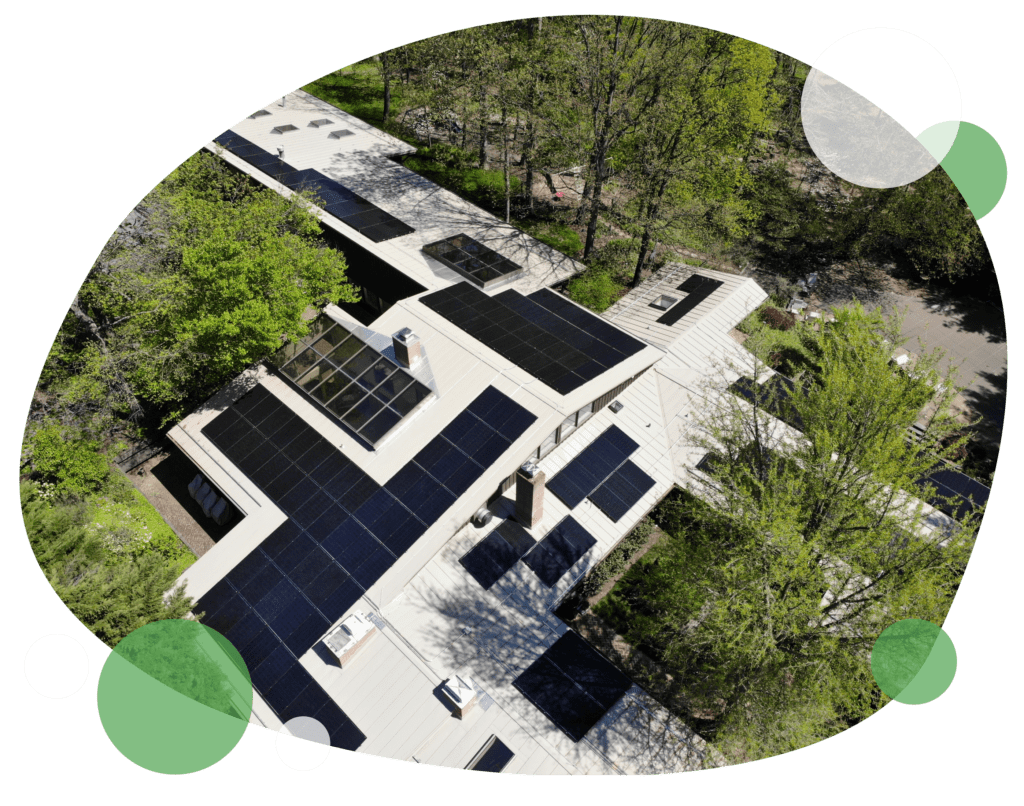
Governments Need to Lead the Investment Game
In 2022, the United States government renewed and enhanced the Federal Solar Investment Tax Credit or ITC. This raised the tax credit granted to home and business owners that install solar systems on their property. While this legislation is a step in the right direction, it’s only one route of the many open to the US government, and governments around the world, to incentivize green energy adoption.
There are various strategies that are being explored or implemented across the globe. Increasing available incentives, from rebates and tax credits to the value of net metering is an option. These incentives help offset the cost of going solar at a consumer level. Not only are federal incentives important, but requiring states and municipalities to provide their own incentive structures could help ensure solar is spread more equitably in low-income and rural communities.
Of course, the consumer level is one aspect of the puzzle necessary for true decarbonization in modern societies. Governments also have to address their own functions, from military and government infrastructure to working in tandem with the private sector. The hopes of achieving lower emissions can only be realized by bringing the corporate sector into the fold.
This collaboration may come in the form of the carrot and the stick. For instance, incentives could be provided to companies that electrify their manufacturing, transition their offices to green energy, produce or import renewable energy components, and more. On the other hand, more stringent regulations may need to be in place to ensure a path towards carbon neutrality, such as requiring utility companies to increase their share of green energy production through SRECs or assessing penalties to significant polluters.
The good news is that we’re already seeing significant governmental action take place in countries across the world. In 2022, global investment in solar and renewable energy by governments increased by $500 billion dollars. Global spending from the public sector is expected to reach $2 trillion dollars annually by 2030. While this investment is significant, it falls short of the estimated $4 trillion dollars in yearly green energy investment necessary to fully decarbonize.
Government institutions are slowly turning towards a cleaner, renewable path for their energy consumption. While these steps are slow, they’re picking up steam as more countries face the consequences of climate change. With increased investment, solar production looks to be supercharged. However, as solar soon begins generating more electricity than it ever has before, it’s important that we develop better methods of harnessing and storing it.
Pushing Battery Storage to Its Upper Limits
Most renewable forms of energy rely on the presence of natural elements to fuel them. While solar can still draw energy on cloudy days, prolonged periods of rain, snow, and cloud cover can result in less energy generated than sustained direct sunlight. To properly address this issue, panels need a way to store the energy they produce during ideal periods to supplement lower generation periods. Battery storage is a solution to this problem, storing energy created instead of transferring it back to the grid for immediate use.
Battery storage is widely used in residential and commercial solar installations. It can provide power during grid outages, and supplement weaker generation periods. But the current battery storage deployed at scale doesn’t have enough capacity to be viable for large-scale institutions like public transit or industrial production.
Researchers are already well on their way to addressing these limitations, though. Particularly, they’ve had success in deploying grid-scale battery storage systems that are able to reserve a larger amount of electricity than seen before. Battery systems help solve the intermittency issues presented by solar and wind when deployed at scale. These systems also make renewable power plants extremely viable, a necessity for reducing carbon emissions caused by utility production.
Wesley Cole, an energy analyst with the National Renewable Energy Laboratory, predicts a spectacular outlook for the future of battery storage. Speaking to Yale Environment 360, Cole stated “We see storage being a large player across effectively every future we look at. And not just one or two gigawatts… but tens to hundreds of gigawatts.”
With improved storage, solar and other renewables have increased viability in large-scale energy production. However, to avoid the costly environmental hazards of earlier energy revolutions, care has to be given to how material production can be more sustainable.

Looking Towards Sustainable Production (And Decommission)
Solar panels are an industrial product, and as panel production has ramped up, so has the challenge of what to do with the panels once they reach the end of their lifespan. If they aren’t properly broken down or disposed of, panels leak toxic chemicals that can impact waterways and plant life.
One alternative is proper panel recycling, which involves breaking down components into reusable materials. The barrier to this method currently is cost. While panel recycling firms exist, they haven’t been deployed on a large scale because few consumers want to pay money simply to discard a product that no longer functions.
Two solutions are available to make these issues less prevalent. The first is increasing panel longevity. Panels currently can last 20-25 years. While this is great durability over time, researchers see room for improvement. Founded in 2016, the Durable Module Materials (DuraMAT) Consortium is a multi-laboratory group led by the NREL with a direct focus on extending the lifespan of solar systems. Through advanced stress testing, researchers believe there’s a real opportunity to commercialize panels that can last 50 years.
The second opportunity comes through increased funding to the panel recycling industry. Subsidies could help offset the costs, encouraging more consumers to embrace recycling as a natural part of a panel’s lifespan. Additionally, municipal funding could be used to make state and local solar recycling facilities similar to the duties currently performed by public works departments.
Solar is clearly healthier for the environment than conventional energy sources. But if we want to move towards more substantive stewardship for our ecosystems, it’s important to address waste within the solar industry.
Renewable energy is essential for the health of our planet. The occurrence of challenges doesn’t mean that path should be dismissed. Instead, it shows the need for an increased focus on tackling each roadblock to ensure renewable energy becomes more viable from the large scale down to the individual consumer.
Now that we have a grasp on the barriers solar faces, and the solutions coming down the pipeline, it’s time to look ahead. To truly wrap our minds around what a solar future looks like.
Envisioning a Solar Future
Whenever we look ahead to the direction of future technology and society, it’s important to have a grounded approach. We’ve taken a deep look at the projections researchers and industry experts hold for the direction of technology. Let’s consider both how solar is set to figure into the larger energy outlook, as well as the innovative ways the technology might be used to revolutionize our day-to-day lives and environments.
Solar to Play a Significant Role in Generating Electricity
How we generate electricity is a core factor in carbon emissions. Using renewables to account for a significant portion of this process would greatly reduce our impact on the environment. With advancements being made in efficiency, battery storage, and cost-effectiveness, this reality is on the horizon. The NREL estimates that 45% of the United States’ electricity could be generated from solar if we aggressively pursue a decarbonization strategy.
In this ideal scenario, solar will be used across diverse industries to provide renewable power. Researchers are also confident that a commitment to solar energy will see its use expand beyond the electrical grid into other energy fields. For instance, in the “production of clean fuels, such as hydrogen produced via electrolysis.” These advancements present a clear opportunity to expand solar within new avenues of energy generation. Solar can help lead the way for more sustainable electric grids and horizons beyond.
An important aspect of a solar-powered future is considering how it can be incorporated within our built environment, an advantage solar offers that other renewable energy methods just don’t meet.

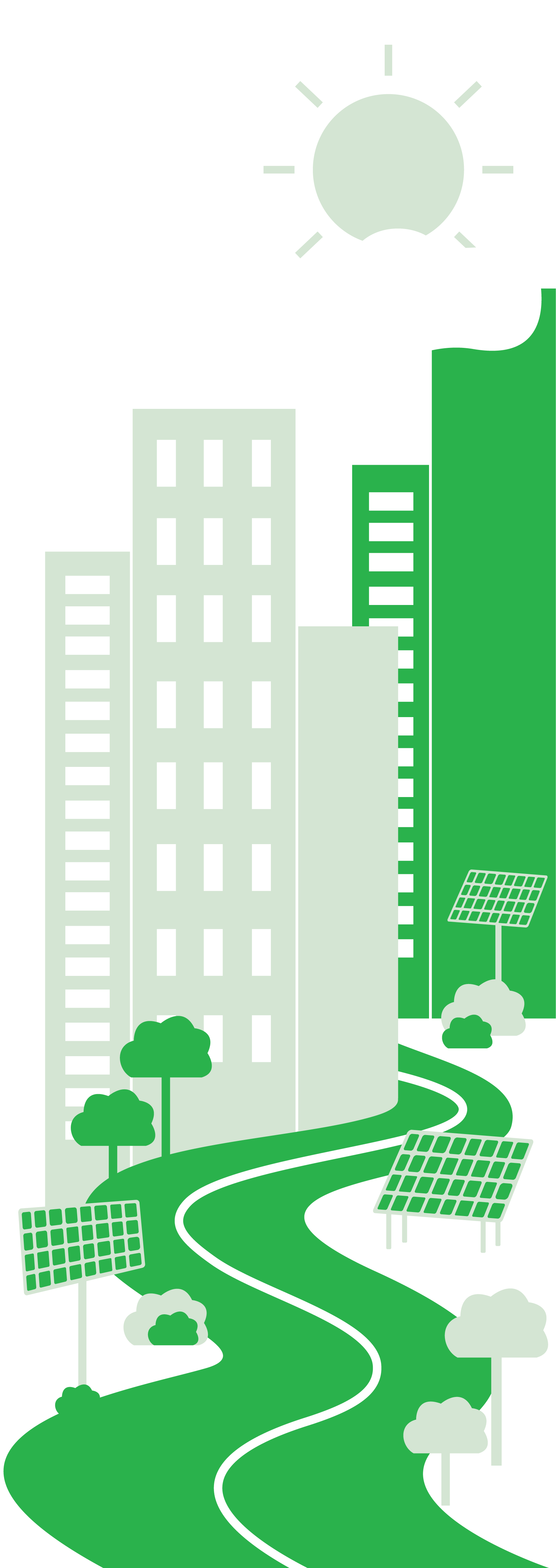
The Solar-Diffused City
Diverse environments come with diverse energy needs. No transition to clean energy will be reliant on one method to take over the role fossil fuels hold in society. Instead, a multipolar approach will be necessary to meet the consumption requirements of industry, transportation, and our day-to-day lives. Experts often focus on the concept of “distributed energy,” a method to incorporate smaller-scale, localized production sources into our environment. Energy production requires physical space, and sometimes an outsized amount of it. From power plants to oil refineries, there’s a lot of real estate bargained off to meet our energy needs.
Even green energy methods like wind turbines and hydroelectric dams require a relatively large area to occupy. The advantage of solar, especially within urban settings, comes through its diffusability. No other method can be as easily incorporated into the built environment as solar. Any surface touched by sunlight is a candidate to harvest solar energy. While individual contributions may be small, a collective system of smaller installations can be a viable direction for energy-conscious urban planning.
In practice, this would look like rethinking how energy production can be incorporated into our everyday lives. With advancements being made in efficiency and storage, as well as the cultural embrace of electrical vehicles, this solar-integrated environment might not be as far off as we think.
To understand how solar production can be diffused within our built environment, it’s important to focus on different sectors and how they may evolve to meet the call for solar adoption.
Solar in Transit
Every year, roughly 28% of energy consumption in the United States is in the sector of transportation. This includes private transportation (personal vehicles), public transit, and the movement of goods across the country. Transportation provides some of the best outlooks for integrating solar into its design.
Passenger Vehicles:
Increasing the adaption rates of electric vehicles is a huge step towards reducing the carbon emissions of private vehicles. But how do we make EVs more reliable and accessible? There are a few directions researchers predict us to head. The first is through the wide-scale implementation of solar carports. These are small solar arrays that can be installed over parking lots. Surface parking consumes as much as 5% of all urban land in the United States, and without any additional uses, they’re a huge drain on land usage as well as contributing to heat waves in cities. Converting parking lots with solar carports would allow us to retool the function of parking areas within our urban environments. Carports can be equipped with EV chargers, directly transferring the energy generated by the panels to your car while you’re in the office or shopping.
Additionally, researchers have looked at direct-solar powered vehicles. These cars would generate part of their necessary energy through a panel system equipped to the vehicle’s roof. These have great potential, but they’re an even more tantalizing prospect for freight transportation.
Freight Transport:
Coordinating freight lines is a costly and energy-intensive process. The United States relies heavily on the use of tractor-trailers and freight rail lines to carry goods and resources across the continent. Exploring options for electrifying these transit routes is at the top of the researchers’ list. One option is an expanded deployment of direct-solar power as discussed in the previous section. The larger surface area of truck trailers and train cars offers a more viable path for panel equipment. But researchers are also intrigued by technology just on the horizon, including “hydrogen vehicle coordination with solar-powered electrolyzers, and timed charging schemes to coordinate EV fleet charging,” as noted by the NREL.
Photovoltaic solar energy is a great match to support a transportation economy built on electric vehicle employment because the direct transfer of energy mitigates power lost during the conversion process. Ensuring our goods are transported through renewable power can drastically cut emissions.
Public Transit
Electrified passenger rail systems are already common in cities across the world. However, the United States currently has an underwhelming rail system connecting its urban areas to their exurbs. To reduce passenger vehicle emissions from individual cars on the roads, a great push will need to be to expand rail lines to support larger populations further from city centers. The blueprint has already been laid in countries like China and Japan.
Rail lines aren’t the only public transit systems that can be electrified. More cities are transitioning their municipal bus fleets to EVs. While the larger picture for global emissions is enticing, it’s also important to consider the impacts on a localized scale. A World Health Organization database tracking air pollution across 3,000 cities in 103 countries has found that 80% of the recorded population lives in communities with detrimental levels of air pollution. This decline in urban air quality is contributing to the incidence of lung cancer, stroke, heart disease, asthma, and other chronic respiratory conditions amongst the populations in these areas.
Electrified public transit in urban areas would cut out a significant pollutant factor that damages the health of local communities. An ideal solar future would see us not only considering the impact of energy consumption on the larger environment but on local communities that can directly suffer from poor health outcomes driven by pollution.
Building a Better Grid
Opponents of green energy often point to the instability of electrical grids in the US. Concerns are raised about its ability to meet demand in an increasingly electrified energy economy. But the truth is that researchers have already looked at the capacity of our electrical grid, and are impressed by what’s on the horizon.
The effectiveness of a grid is often measured by the duration of outages experienced by customers each year. This metric is referred to as the “System Average Interruption Duration Index” (SAIDI). If increases in electrification inevitably lead to more outages, we’d expect to see this demonstrated globally. However, as the Yale School of the Environment observed, countries with a large reliance on renewable energy don’t follow this assumption. Germany generates half of its energy through renewables but has the second most reliable grid system in Europe, with a SAIDI of just 0.25 hours.
The strain on the grid will continue to be relieved through organic solutions already emerging in the field of solar energy. As we mentioned earlier, battery storage is a fundamental component in supporting consistent grid uptime. Battery storage improvements are coming quickly down the pipeline, and are an indispensable tool in the widescale implementation of solar energy.
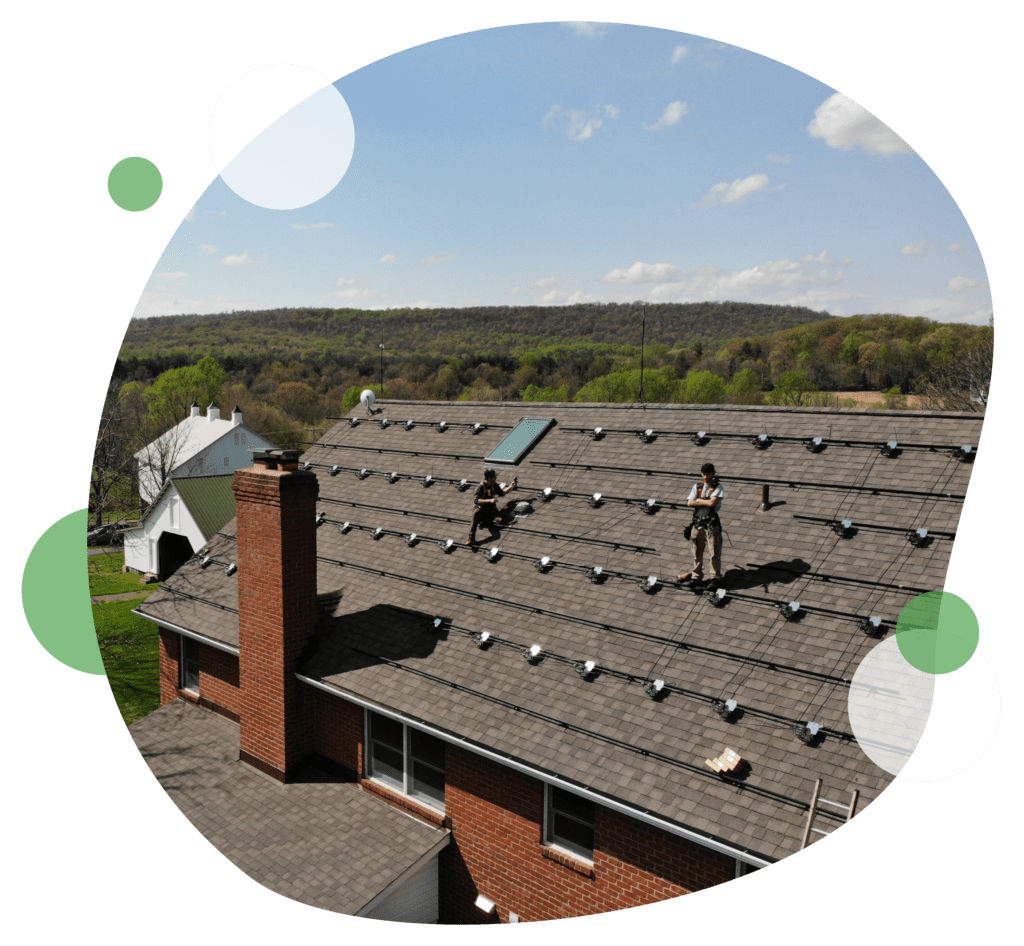
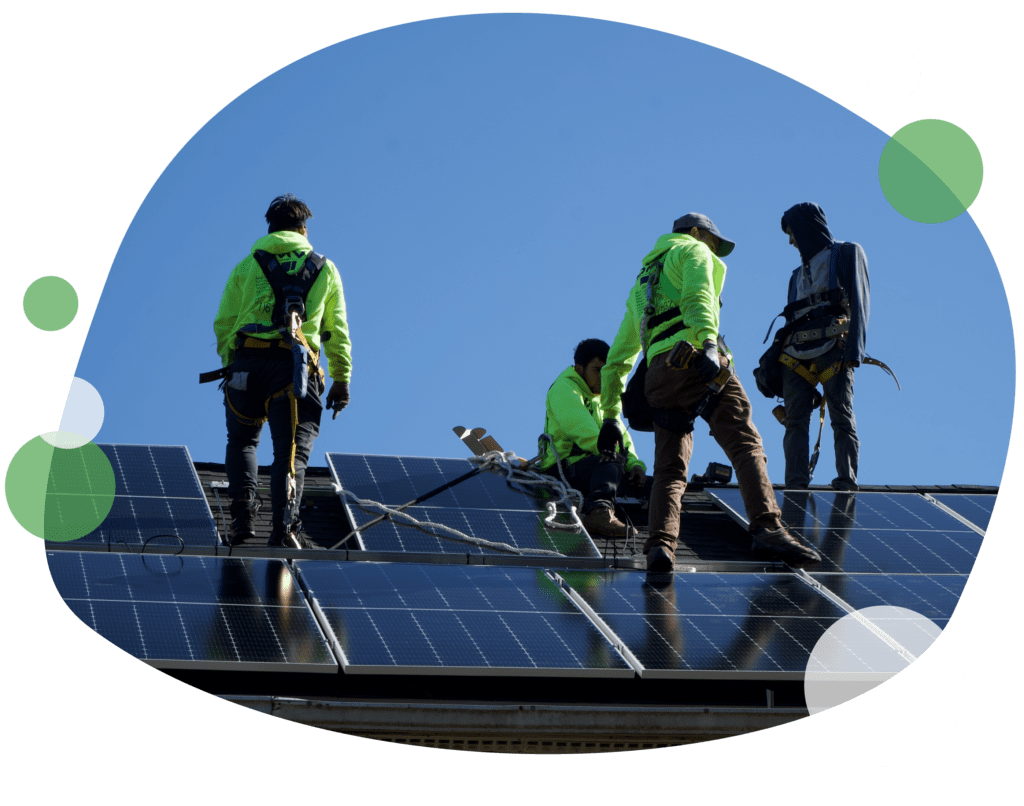
What a Solar Future Could Look Like
We’ve reviewed the speculation from experts in the field on how solar can be adapted to be a consistent part of our everyday lives. If we’re able to meet the challenges presented and fully embrace a solar-powered, green energy society what would it look like?
Integrating Solar Into Construction
The industry of residential and commercial solar focuses on retrofitting existing structures with solar power so property owners can benefit from reduced energy costs and carbon emissions. In the solar future, solar system integration would be a fundamental piece in the design and planning of new construction projects. Communities could be intentionally laid out to maximize roof exposure to sunlight, and builders could prioritize roof designs that can accommodate high panel volumes.
In this scenario, the solar-diffused city would become the goal of urban planners and developers. The cost-benefit would be baked into the structure of our environments, with small panel arrays used across urban and suburban landscapes. Each local community would embrace the concept of distributed energy by deploying generation and storage facilities at a smaller, more localized scale.
With green energy projects integrated into these environments, community health would see a boon.
A Brighter Future For Rural Communities
In the US, rural communities have seen young generations and employment opportunities flee to urban areas. Embracing a new energy economy could help stem this tide and elevate the prospects of rural communities across the country.
Rural regions could become the jewel of energy production, stimulating local economies with high-paying solar and wind sector jobs. A strong local economy could encourage younger generations to embrace the beauty of rural living.
Additionally, rural communities are typically some of those hit hardest when power outages occur, with extended blackout periods while utility companies address the problem. Solar can help keep rural communities powered even during natural disasters such as wildfires or deep freezes. Having reliable, stored energy can be a huge boon to rural communities that are typically further away from utility service providers.
Lastly, solar can help reimagine land use across rural landscapes. Solar farms would be a viable alternative to traditional farming options, and unused land could be repurposed as a vital source of energy creation.
A Solar Future on the Horizon
As we stated from the outset, the reality of climate change is established and present. But beyond simply the impact of carbon emissions, it’s time for us to take a harder look at how energy production and consumption affect every aspect of our lives. Local communities suffer health consequences, workers put themselves at great risk in dangerous scenarios on rigs and in oil fields, and pollution contributes to the collapse of ecosystems.
It’s clear that a better way forward is needed. Thankfully, we have the toolkit already at our disposal to create healthier outcomes that center on the well-being of people and the planet. There’s a lot to be excited about within the world of green energy.
As a solar panel installation company, we’ve seen the impact going green can have even on a small scale. We’ve witnessed one neighbor embrace the benefits of solar energy, and before long, the entire community is hoping to transition their energy system. A better future requires all of us to build it. For homeowners to think about how they can improve their communities, for businesses to consider how they can operate more sustainably, and for governments to lead the charge on a transition to clean renewable energy.
A solar future is on the horizon, and it’s up to all of us to take the right steps to ensure these brighter possibilities become a reality.
At Lumina Solar, we’re proud to have a hand in this transition, making solar an accessible, affordable option for homes and businesses across the Mid-Atlantic. We can’t wait to see what the future holds, but we’re also focused on doing what we can in the here and now. If you’re interested in learning more about going solar, reach out to our team today.
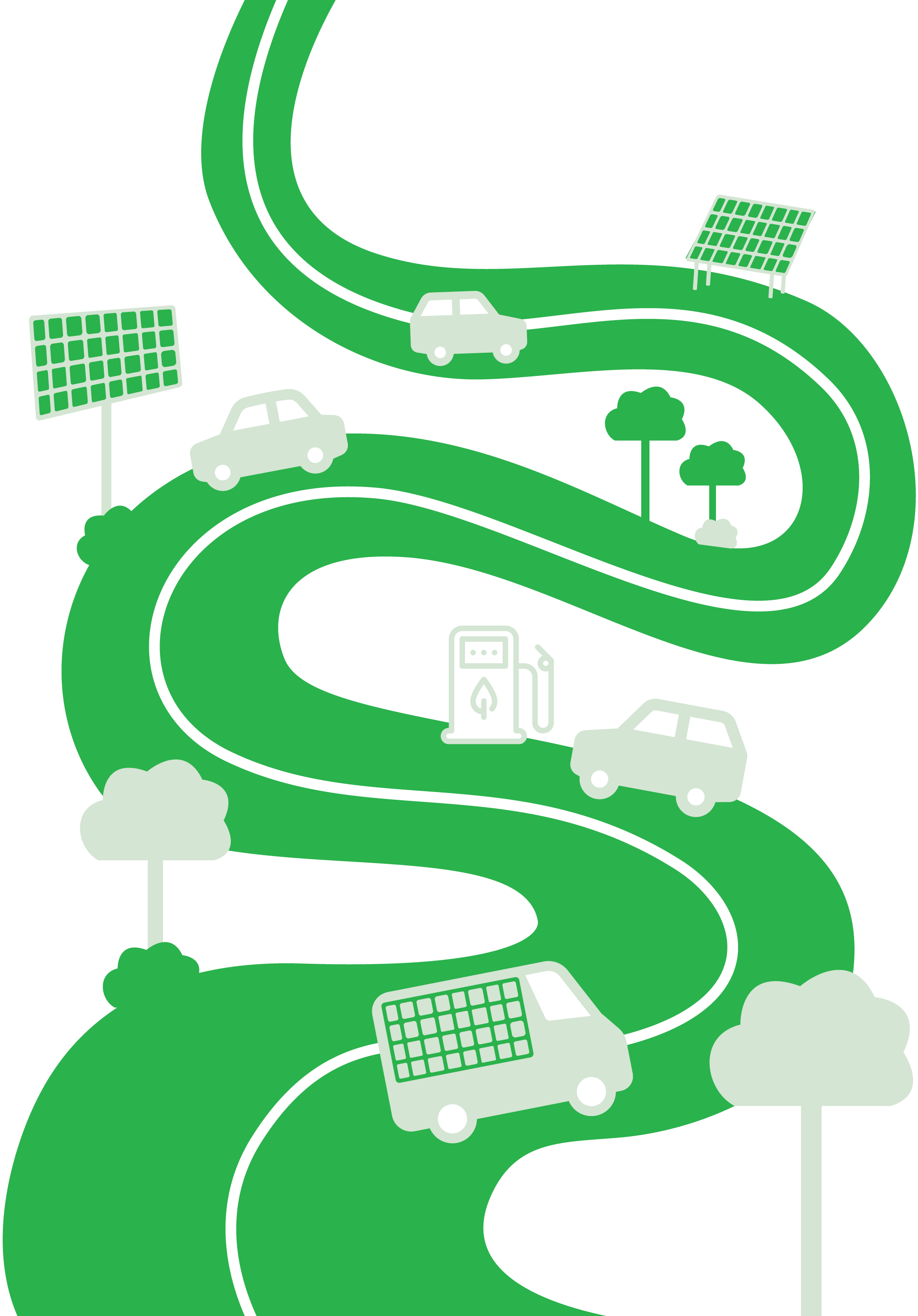
If you’ve been considering solar for your home, now is...Read More
Concentrated Photovoltaics: Focused Solar Power Plays A Significant Role In...Read More
Solar Hybrid Power Systems: Combined Solar Power Setups Play A...Read More
Photovoltaic Power Station: A Solar Energy Plant Plays A Crucial...Read More
List Of Solar-Powered Products: An Array Of Sun-Powered Items, Such...Read More


